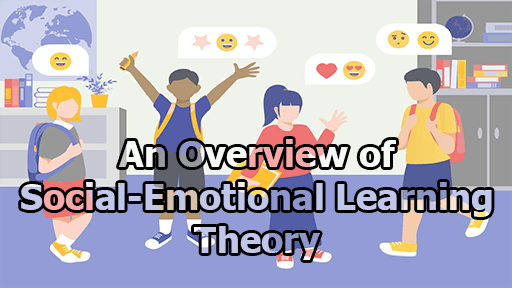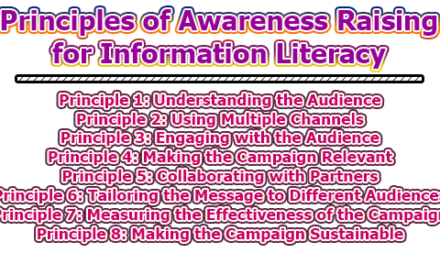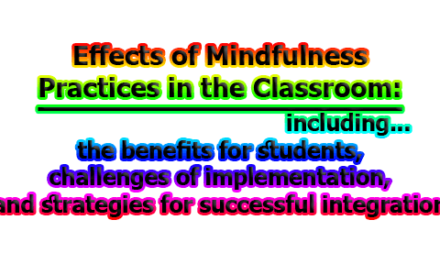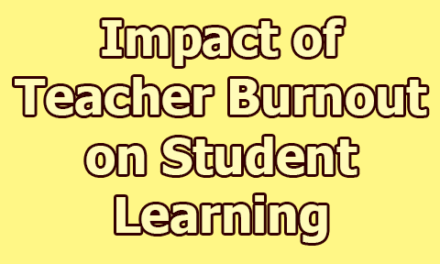An Overview of Social-Emotional Learning Theory:
Social-emotional learning (SEL) theory represents a pivotal framework that recognizes the profound impact of emotions, relationships, and self-awareness on human development and well-being. Rooted in decades of research and practice, SEL theory has gained prominence in education, psychology, and various fields that aim to nurture individuals’ emotional intelligence and interpersonal skills. It has transformed the way we understand and approach personal growth, character development, and positive social interactions. In this article, we will explore an overview of social–emotional learning theory; including fundamental principles, core components, and the significance of SEL in education and beyond. From the five key elements of SEL to the programs and strategies for its application, this exploration offers a comprehensive understanding of a theory that has the potential to positively shape lives and communities.
What Is the Social-Emotional Learning Theory?
Social-emotional learning (SEL) theory is an educational framework that emphasizes the development of essential social and emotional skills in individuals. According to the Collaborative for Academic, Social, and Emotional Learning (CASEL), one of the leading organizations in the field, SEL theory “involves the process through which children and adults acquire and effectively apply the knowledge, attitudes, and skills necessary to understand and manage emotions, set and achieve positive goals, feel and show empathy for others, establish and maintain positive relationships, and make responsible decisions” (CASEL, 2020).
This theory underscores the importance of fostering skills like self-awareness, self-regulation, interpersonal skills, and responsible decision-making as a means to enhance both academic achievement and overall well-being (Elias et al., 1997). SEL theory posits that individuals who possess these competencies are better equipped to succeed academically, engage in healthy relationships, and navigate life’s challenges effectively.
Elements for Developing Emotional Intelligence:
Social-emotional learning (SEL) theory identifies five specific elements essential for developing emotional intelligence, as described by Fernández-Berrocal and Extremera in 2006:
1. Knowing One’s Emotions: This element involves self-awareness and the ability to recognize and understand one’s own emotions. It means being in tune with your feelings, identifying them accurately, and acknowledging their impact on your thoughts and actions. Knowing one’s emotions is the foundation of emotional intelligence and is crucial for effective self-regulation.
2. Managing Emotions: Once individuals are aware of their emotions, the next step is learning how to manage them effectively. This includes regulating emotional responses, handling stress, and coping with challenging situations in a healthy and constructive manner. Emotion regulation involves strategies like relaxation, problem-solving, and seeking support when necessary.
3. Motivating Oneself: Motivating oneself is a key element of emotional intelligence and refers to the ability to set and work toward personal goals. This element involves self-motivation, resilience, and perseverance, even in the face of setbacks and obstacles. It is about harnessing emotions to fuel productivity and maintain a positive attitude.
4. Recognizing Emotions in Others: This element, also known as empathy, is the capacity to perceive and understand the emotions of others. It involves the ability to be sensitive to the emotional cues and non-verbal signals of people around you. Recognizing emotions in others is vital for building and maintaining positive relationships, as it helps individuals respond with understanding and compassion.
5. Handling Relationships: Effective interpersonal relationships are at the core of social and emotional learning. This element encompasses skills related to communication, cooperation, conflict resolution, and building and maintaining healthy relationships. It involves treating others with empathy, respect, and consideration and being able to navigate the complexities of human interactions successfully.
These five elements collectively form the foundation of emotional intelligence and are central to personal and social development. Developing proficiency in these areas not only leads to better emotional well-being but also enhances an individual’s ability to succeed in various aspects of life, including academics, work, and personal relationships.
Goals of Social and Emotional Learning:
The goals of Social and Emotional Learning (SEL) are crucial for individuals to contribute positively to society, as they encompass the development of self-awareness, self-management, decision-making, social awareness, and relationship building:
1. Self-awareness: Self-awareness is the foundation of emotional intelligence and involves understanding one’s own emotions, recognizing the physical sensations associated with different emotions, and identifying the triggers or antecedents of specific emotional responses. SEL supports children in getting to know themselves in an engaging and enjoyable way, helping them become more attuned to their inner emotional states (Binfet et al., 2023).
2. Self-Management: Self-management, a vital component of emotional intelligence, encompasses the ability to regulate one’s emotional responses effectively. It involves handling emotions such as anger, sadness, or frustration and responding to them in a controlled and adaptive manner. Self-management is essential for self-regulation and the maintenance of healthy relationships, and SEL equips students with the skills necessary for managing their emotions (Schneider et al., 2023).
3. Social Awareness: Social awareness is the capacity to be attuned to the emotions and perspectives of others. SEL fosters this important skill by teaching individuals how to take others’ viewpoints, interpret social cues, adhere to social norms, develop empathy, and recognize strengths in others. Social awareness is a critical aspect of functioning successfully in society (Cooper et al., 2023).
4. Decision-Making: Effective decision-making is a significant component of transitioning into adulthood, and it is incorporated into traditional SEL objectives. Decision-making involves identifying the decision at hand, gathering relevant information, generating alternative solutions, and evaluating the potential consequences in an efficient and ethical manner. Emotional management is closely related to decision-making, as emotions can influence the choices individuals make (Schneider et al., 2023).
5. Relationship Building: Positive relationships within diverse groups are paramount in almost every culture, and SEL emphasizes the importance of this. SEL teaches students how to communicate effectively, resolve conflicts in a positive manner, collaborate in teams, express thoughts and feelings appropriately, resist stereotypes and peer pressure, and advocate for others. It equips individuals with the skills necessary to build and maintain healthy, constructive relationships (Cooper et al., 2023).
The goals of SEL are directed at empowering individuals with the social and emotional competencies necessary to navigate life successfully, contribute to the community, and engage in meaningful relationships while also becoming emotionally intelligent and self-aware individuals. These skills are considered vital for personal growth and societal well-being.
Why Is SEL Important for Mental Health?
Social and Emotional Learning (SEL) is critically important for mental health and overall well-being. Here are 17 benefits of SEL and how it can be applied:
- Positive School Adjustment: SEL predicts positive school adjustment, contributing to a more successful and satisfying educational experience (Bierman & Motamedi, 2015).
- Learning Engagement: SEL promotes learning engagement by fostering emotional intelligence and self-awareness, leading to improved academic performance and enthusiasm for learning (Bierman & Motamedi, 2015).
- Discipline Problem Reduction: Implementing SEL programs has been associated with a decrease in discipline problems in schools, leading to a more harmonious and productive learning environment (Bierman & Motamedi, 2015).
- Higher Graduation Rates: Schools that integrate SEL have reported increased high school graduation rates, ensuring that more students complete their education successfully (Bierman & Motamedi, 2015).
- Improved Future Employment: SEL equips students with essential life skills, enhancing their future employability and helping them transition into the workforce successfully (Bierman & Motamedi, 2015).
- Positive Adult Health: SEL not only benefits students during their school years but also has a positive impact on their long-term adult health outcomes, underscoring its lasting importance (Bierman & Motamedi, 2015).
- Emotion Understanding: SEL assists children in understanding their emotions, enabling them to identify and manage various emotional states effectively (Gimbert et al., 2023).
- Identity Development: SEL plays a role in fostering students’ identity development, enhancing self-confidence, self-compassion, and the recognition of their strengths, needs, values, and judgments (Cooper et al., 2023; Gimbert et al., 2023).
- Effective Communication: SEL programs emphasize effective communication, which includes not only language skills but also attentive listening and clear self-expression, essential for building and maintaining personal and professional relationships (Laburova, 2020).
- Empathy Development: SEL fosters empathy, a crucial component of emotional intelligence, helping students understand others’ perspectives and promote kindness, which in turn reduces bullying (Damayanti et al., 2023).
- Problem-Solving Skills: SEL teaches problem-solving skills, which are essential for students and must be explicitly taught. These skills enable students to make swift, ethical decisions while considering alternative solutions and can also reduce instances of bullying (Yüksel et al., 2021).
- Improved Attitudes and Behaviors: SEL positively impacts students’ attitudes, behaviors, and academic performance, creating a more positive and conducive learning environment (Cooper et al., 2023; Durlak et al., 2011).
- Reduced Externalizing Behaviors: SEL decreases externalizing behaviors such as being off-task or aggressive and reduces substance abuse, contributing to a safer and more productive learning environment (Cooper et al., 2023).
- Enhanced Teacher Efficacy: SEL has a positive impact on teachers as well, increasing their reported efficacy for behavior management and reducing teacher burnout (Cooper et al., 2023; Domitrovich et al., 2016).
- Calm Learning Environment: SEL creates a calmer classroom environment, making it easier for educators to teach and for students to learn, ultimately enhancing the overall educational experience (Cooper et al., 2023).
- Improved Mental Health for Students: By promoting emotional intelligence and resilience, SEL contributes to students’ improved mental health and well-being, reducing stress and enhancing coping mechanisms.
- Positive Relationships: SEL equips students with the skills necessary to build and maintain positive, healthy relationships, both within and outside of the school environment.
SEL not only benefits students’ mental health but also positively impacts teachers, the learning environment, and future life outcomes. It fosters essential skills and competencies that are vital for emotional well-being and success in various aspects of life.
Social-Emotional Learning Programs:
Here are five research-based Social-Emotional Learning (SEL) programs that can be implemented in schools and educational settings:
1. Character First Education:
- Target Audience: K-12 classrooms.
- Description: Character First Education offers SEL programs with a focus on character development. The curriculum covers concepts such as compassion, honesty, gratefulness, responsibility, respect, forgiveness, self-control, and initiative. It includes materials for elementary, intermediate, and high school levels.
- To learn more: Character First Education
2. Girls on the Run:
- Target Audience: Girls in third through eighth grade.
- Description: Girls on the Run is a research-based, 10-week after-school program designed to instill inner strength and self-worth in girls. It goes beyond physical activity and includes lessons on character development. The program culminates in a celebratory 5K race.
- To learn more: Girls on the Run
3. Playworks:
- Target Audience: Interested schools.
- Description: Playworks provides on-site coaches, staff training, and online resources to promote physical activity and social-emotional development. Students participate in various games and activities, including icebreakers, cooperative games, and sports to enhance their social and emotional skills.
- To learn more: Playworks
4. Leader in Me:
- Target Audience: Whole-school K-12 improvement model.
- Description: Leader in Me is based on Stephen R. Covey’s “The 7 Habits of Highly Effective People” and introduces 38 key concepts over the course of a year through short lessons. It includes detailed lesson plans and aims to cultivate a strong classroom culture.
- To learn more: Leader in Me
5. Tools of the Mind:
- Target Audience: Pre-K and kindergarten.
- Description: Tools of the Mind is a pre-K and kindergarten curriculum inspired by Vygotskian theory and neuroscience. Teachers have flexibility in scheduling activities throughout the school year. The program emphasizes pair and small group learning activities to develop social and emotional skills.
- To learn more: Tools of the Mind
For additional guidance on selecting the most appropriate SEL program for your school’s needs, you can refer to the free downloadable consumer guide provided by the Wallace Foundation, which offers information on the background of SEL, implementation strategies, and program selection: Wallace Foundation – SEL Consumer Guide
These programs offer a range of options for promoting social and emotional learning, character development, and overall well-being in students.
How to Apply SEL in Education and Schools:
Implementing Social and Emotional Learning (SEL) in education and schools requires a systematic approach and commitment from both students and educators. Here are five strategies for applying SEL effectively:
- Buy-In from All Stakeholders: Ensure that students, educators, and all school staff understand the importance of SEL and commit to the curriculum. This involves not only teaching SEL but also living it, so that it becomes a part of the school’s culture. Provide comprehensive training to all staff members, including teachers, custodians, instructional aides, and cafeteria workers. Everyone who interacts with students should have a shared understanding of SEL principles and be equipped to reinforce them.
- Designate Dedicated SEL Time: Allocate specific time slots for SEL instruction within the daily school schedule. Ideally, this should be a daily, protected time shared across all classrooms. It should be free from interruptions, such as special education services, to ensure that all students benefit from SEL instruction. Consistent SEL time ensures that social and emotional learning becomes a regular and valued part of the school day.
- Integrate SEL Throughout the School: Embed SEL principles in all aspects of the school environment. SEL lessons and expectations should extend beyond the classroom and into all areas of the school, including the cafeteria, bathrooms, auditorium, and even extracurricular activities. Take advantage of teachable moments and emphasize the teachings of SEL in everyday interactions.
- Leverage PBIS Framework: Consider adopting the Positive Behavior Intervention System (PBIS), an evidence-based prevention approach that complements SEL efforts. PBIS focuses on reinforcing positive behaviors and minimizing problem behaviors (Cook et al., 2015). PBIS and SEL can work together to promote social and emotional competencies, creating a more positive and supportive school environment (Zhang et al., 2023).
- Implement Trauma-Informed Practices: Recognize the prevalence of traumatic experiences among students and consider a trauma-informed approach to meet their needs. Trauma-informed practices create a safe and supportive teaching environment for students who have experienced trauma. Explore models like the Healthy Environments and Response to Trauma in Schools (HEARTS) model to provide trauma-informed support and create a more compassionate school environment (Dorado et al., 2016).
By applying these strategies, schools can create a holistic and supportive environment that fosters social and emotional learning, ensuring that students not only understand the principles of SEL but also integrate them into their daily lives and interactions with others.
Training in SEL: 4 Certifications and Master’s Degrees:
If you’re interested in pursuing further education and training in Social and Emotional Learning (SEL), here are four certification and master’s degree programs to consider:
1. Master’s in Social-Emotional Learning:
- Institution: National University
- Description: National University offers a master’s degree program in social-emotional learning. This program allows you to choose between in-person and online four-week classes and includes an action research project as part of the curriculum.
- Find more information: National University – Master’s in SEL
2. Online Certificate in Social-Emotional Learning & Behavioral Wellness:
- Institution: Drexel University
- Description: Drexel University provides an online graduate certificate in social and emotional learning and behavioral wellness. This program is designed for educators and administrators to help students overcome nonacademic barriers to learning. It includes four three-credit courses and 15 hours of field placement per term.
- Find more information: Drexel University – SEL Certificate
3. SEL Certificate:
- Institution: Rutgers
- Description: Rutgers offers two certificate programs in social-emotional learning. The general track is for individuals with limited knowledge in SEL and character development, while the accelerated track is designed for educators and school personnel with over five years of teaching experience in the curriculum.
- Find more information: Rutgers – SEL Certificate
4. SEL in 60 Minutes:
- Offered by: Collaborative for Academic, Social, and Emotional Learning (CASEL)
- Description: While not a degree or certificate program, CASEL offers a free 60-minute online course. This short training provides an understanding of the critical skills needed for a fulfilling and healthy life.
- Find more information: CASEL – SEL in 60 Minutes
These programs offer various levels of education and training in SEL, from master’s degrees to shorter online courses. You can choose the one that best suits your educational and career goals.
In conclusion, Social-Emotional Learning Theory is more than just an educational concept; it is a holistic approach that holds the promise of enhancing human well-being, fostering empathetic relationships, and fortifying individuals against life’s challenges. As we’ve seen in this overview, the five core elements of SEL—self-awareness, self-management, social awareness, decision-making, and relationship-building—provide a solid foundation for emotional intelligence and character development. Furthermore, the applications of SEL in education, schools, and society at large can lead to a host of benefits, from improved academic performance to better mental health and more harmonious communities.
The evolution and continued growth of SEL theory underscore its importance in an increasingly interconnected and emotionally complex world. By understanding and applying the principles of SEL, we can aspire to create a more empathetic, resilient, and socially responsible society—one in which individuals not only excel academically but also thrive emotionally and interpersonally. SEL theory reminds us that education is not just about acquiring knowledge; it is also about nurturing the heart and soul, equipping individuals with the tools they need to navigate the complexities of life, and building a better, more empathetic world for generations to come.
References:
- Bierman, K. L., & Motamedi, M. (2015). SEL programs for preschool children. In J. A. Durlak, C. E Domitrovich, R. P. Weissberg, & T. P. Gullotta (Eds.), Handbook of social and emotional learning: Research and practice (pp. 135–151). Guilford Press.
- Binfet, J. T., Green, F. L., Roche, S., & Scott, C. (2023). When teachers have the autonomy to create SEL initiatives: Conceptualizations and iterations. International Journal of Emotional Education, 15(2), 1–8.
- Bond, J. B. (2020). Social-emotional learning in a time of chaos. International Dialogues on Education Journal, 7(1/2).
- Chen, J. J., & Adams, C. B. (2023). Drawing from and expanding their toolboxes: Preschool teachers’ traditional strategies, unconventional opportunities, and novel challenges in scaffolding young children’s social and emotional learning during remote instruction amidst COVID-19. Early Childhood Education Journal, 51(5), 925–937.
- Collaborative for Academic, Social, and Emotional Learning (CASEL). (2020). What is SEL? CASEL. https://casel.org/what-is-sel/.
- Cook, C. R., Frye, M., Slemrod, T., Lyon, A. R., Renshaw, T. L., & Zhang, Y. (2015). An integrated approach to universal prevention: Independent and combined effects of PBIS and SEL on youths’ mental health. School Psychology Quarterly, 30(2), 166.
- Cooper, C. M., Przeworski, A., Smith, A. C., Obeid, R., & Short, E. J. (2023). Perceptions of social–emotional learning among K-12 teachers in the USA during the COVID-19 pandemic. School Mental Health, 15(2), 484–497.
- Cooper, G. (2023). Supporting gifted students’ social and emotional learning by improving parental self-efficacy [Doctoral dissertation, Arizona State University].
- Damayanti, S., Asbari, M., Setiawan, D., & Saputra, M. S. (2023). Emotional intelligence: Mengapa EI Lebih Penting daripada IQ? Literaksi: Jurnal Manajemen Pendidikan, 1(2), 279–285.
- Deaton, S. (2015). Social learning theory in the age of social media: Implications for educational practitioners. Journal of Educational Technology, 12(1), 1–6.
- Domitrovich, C. E., Bradshaw, C. P., Berg, J. K., Pas, E. T., Becker, K. D., Musci, R., Embry, D. D., & Ialongo, N. (2016). How do school-based prevention programs impact teachers? Findings from a randomized trial of an integrated classroom management and social–emotional program. Prevention Science, 17(3), 325–337.
- Dorado, J. S., Martinez, M., McArthur, L. E., & Leibovitz, T. (2016). Healthy Environments and Response to Trauma in Schools (HEARTS): A whole-school, multi-level, prevention and intervention program for creating trauma-informed, safe, and supportive schools. School Mental Health, 8, 163–176.
- Durlak, J. A., Weissberg, R. P., Dymnicki, A. B., Taylor, R. D., & Schellinger, K. B. (2011). The impact of enhancing students’ social and emotional learning: A meta-analysis of school-based universal interventions. Child Development, 82(1), 405–432.
- Elias, M. J., Zins, J. E., Weissberg, R. P., Frey, K. S., Greenberg, M. T., Haynes, N. M., … Shriver, T. P. (1997). Promoting social and emotional learning: Guidelines for educators. ASCD.
- Fernández-Berrocal, P., & Extremera, N. (2006). Emotional intelligence: A theoretical and empirical review of its first 15 years of history. Psicothema, 18, 7–12.
- Gimbert, B. G., Miller, D., Herman, E., Breedlove, M., & Molina, C. E. (2023). Social emotional learning in schools: The importance of educator competence. Journal of Research on Leadership Education, 18(1), 3–39.
- Laburova, O. (2020). Teaching communication at lessons of English through building SEL (social and emotional learning) skills. Професіоналізм педагога: Mеоретичні й методичні аспекти, 12, 273–283.
- Penrose, A., Perry, C., & Ball, I. (2007). Emotional intelligence and teacher self-efficacy: The contribution of teacher status and length of experience. Issues in Educational Research, 17(1), 107–126.
- Schneider, T. R., Nusbaum, H. C., Kim, Y., Borders, M. R., & Ryan, T. J. (2023). Emotional intelligence predicts wise reasoning. The Journal of Positive Psychology, 18(1), 106–120.
- Schnurr, P. P. (August, 2023). Epidemiology and impact of PTSD. U.S. Department of Veterans Affairs. Retrieved August 8, 2023, from https://www.ptsd.va.gov/professional/treat/essentials/epidemiology.asp.
- What is the CASEL framework? (n.d.). CASEL. Retrieved August 24, 2023, from https://casel.org/fundamentals-of-sel/what-is-the-casel-framework/.
- Yüksel, M. Y., Tekin, Ö. E., & Kaplaner, K. (2021). The research on the relationship between the problem-solving skills & metacognitive awareness of middle school students and social-emotional learning. Cukurova University Faculty of Education Journal, 50(1), 487–506.
- Zhang, Y., Cook, C. R., & Smith, B. (2023). PurposeFull people SEL and character education program: A cluster randomized trial in schools implementing tier 1 PBIS with fidelity. School Mental Health, 1–18.

Assistant Teacher at Zinzira Pir Mohammad Pilot School and College










